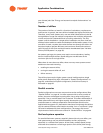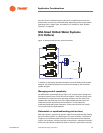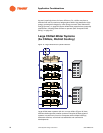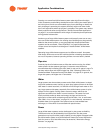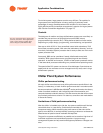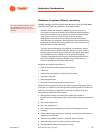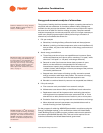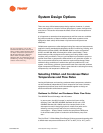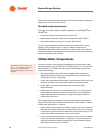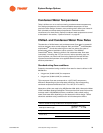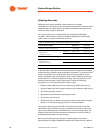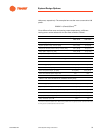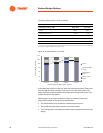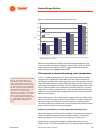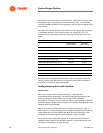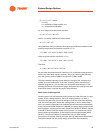
28 Chiller System Design and Control SYS-APM001-EN
System Design Options
recommends a design method that starts with condenser-water temperature
difference of 12°F to 18°F [7°C to 10°C].
Standard rating temperatures
Currently, the standard rating condition temperatures in ARI 550/590
5
and
ARI 560
9
are:
• Evaporator leaving water temperature: 44°F [6.7°C]
• Water-cooled condenser, entering water temperature: 85°F [29.4°C]
• Air-cooled condenser, entering air dry bulb: 95°F [35.0°C]
For years, these temperature definitions were the benchmarks in system
designs. Today, designers apply a variety of different temperatures.
ARI 550/590 reflects this trend by allowing the chilled-water and condenser-
water temperatures to be selected at non-standard points and the chiller to be
tested as specified by the standard.
Chilled-Water Temperatures
Currently, comfort cooling systems are designed with chilled-water supply
temperatures that range from 44°F [6.7°C] to 38°F [3.3°C], and, in some cases,
as low as 34°F [1.1°C]. Reasons to decrease the chilled-water temperature
include the following:
• The system design more readily accommodates wider temperature
differences (lower flow rates) than the standard rating conditions (see
“Selecting flow rates” on page 30).
• Lower water temperature allows lower air temperatures (and flows) to be
selected, resulting in reduced airside installed and operating costs.
• Colder water in the same chilled-water coil may provide better
dehumidification.
• Colder water can be used to increase the capacity of an existing chilled-
water distribution system. In some instances, this can save significant
capital expenditures to add capacity to large central plants that have
reached their flow limits.
Some system designers hesitate to use lower chilled-water temperatures,
concerned that the chiller will become less efficient. As discussed in “Effect of
chilled-water temperature” on page 3:
• Lower chilled-water temperature makes the chiller work harder. However,
while the lower water temperature increases chiller energy consumption,
it significantly reduces the chilled-water flow rate and pump energy. This
combination often lowers system energy consumption.
• Lower chilled-water temperatures may require more insulation on piping
to prevent unwanted condensation (“sweating”). Ensure that pipes are
properly insulated at all water temperatures. Lower temperature water
often does not require more insulation.
Chilled water (without antifreeze) at
34°F (1.1°C) is possible with some
chillers that use sophisticated
evaporator-design and chiller-control
methods.



